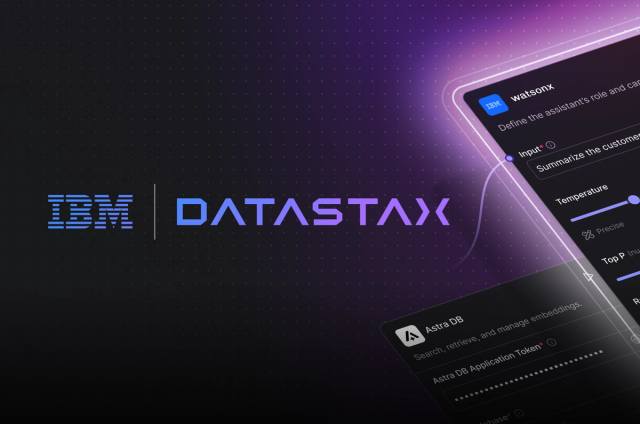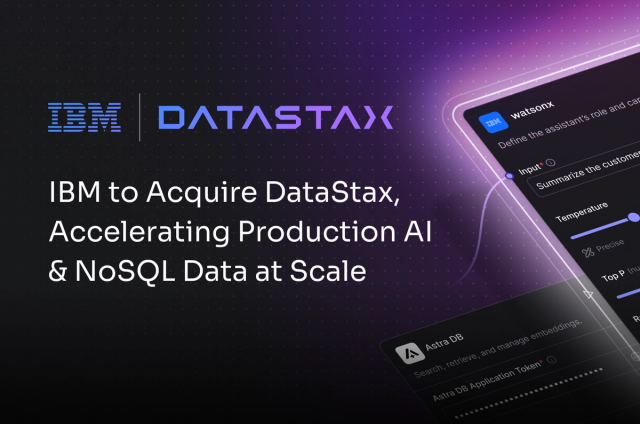For an introduction to NoSQL databases, check out What is NoSQL?
NoSQL databases have been around a long time - since the 1960s - but it wasn’t until the early 21st century that companies really started to use them, primarily to handle their big data and real-time web and cloud applications. Since then, the NoSQL database has surged in use and popularity, although relational databases still have their place. But when beginning to search for a NoSQL solution, what should you look for? Here are the 5 key features to look for in a NoSQL database:
1. Support for Multiple Data Models
Where relational databases require data to be put into tables and columns to be accessed and analyzed, the various data model capabilities of NoSQL databases make them extremely flexible when it comes to handling data. They can ingest structured, semi-structured, and unstructured data with equal ease, whereas relational databases are extremely rigid, handling primarily structured data. Different data models handle specific application requirements. Developers and architects choose a NoSQL database to more easily handle different agile application development requirements. Popular data models include graph, document, wide-column, and key-value. The ideal is to support multiple data models, which allows you to use the same data in different data model types without having to manage a completely different database.
2. Easily Scalable via Peer-to-Peer Architecture
It’s not that relational databases can’t scale, it’s that they can’t scale EASILY or CHEAPLY, and that’s because they’re built with a traditional master-slave architecture, which means scaling UP via bigger and bigger hardware servers as opposed to OUT or worse via sharding. Sharding means dividing a database into smaller chunks across multiple hardware servers instead of a single large server, and this leads to operational administration headaches. Instead, look for a NoSQL database with a masterless, peer-to-peer architecture with all nodes being the same.
This allows easy scaling to adapt to the data volume and complexity of cloud applications. This scalability also improves performance, allowing for continuous availability and very high read/write speeds.
3. Flexibility: Versatile Data Handling
Where relational databases require data to be put into tables and columns to be accessed and analyzed, the multi-model capabilities of NoSQL databases make them extremely flexible when it comes to handling data. They can easily process structured, semi-structured, and unstructured data, while relational databases, as stated previously, are designed to handle primarily structured data.
4. Distribution Capabilities
Look for a NoSQL database that is designed to distribute data at global scale, meaning it can use multiple locations involving multiple data centers and/or cloud regions for write and read operations. Relational databases, in contrast, use a centralized application that is location-dependent (e.g. single location), especially for write operations. A key advantage of using a distributed database with a masterless architecture is that you can maintain continuous availability because data is distributed with multiple copies where it needs to be.
5. Zero Downtime
The final but certainly no less important key feature to seek in a NoSQL database is zero downtime. This is made possible by a masterless architecture, which allows for multiple copies of data to be maintained across different nodes. If a node goes down, no problem: another node has a copy of the data for easy, fast access. When one considers the cost of downtime, this is a big deal.
Summary: NoSQL vs. SQL Decision Making
Choosing between a NoSQL and a relational database is always going to come down to your company’s particular needs. And there are, of course, situations for which you might want to use both types, as they can often complement each other. If you deal with a lot of data types, and/or you want or need to build powerful web and cloud applications for a distributed and quickly growing user base, then you will need your database to be multi-model, flexible, easily scalable, distributed, and always on, which means you will need a NoSQL database that can handle these requirements.
- If you want to learn more about the differences between NoSQL vs. Relational Databases, check out our in-depth comparison page.
- Interested in learning about more than just features? Check out our complete guide to NoSQL.
- We also have an informative white paper that discusses Active Everywhere Databases.










